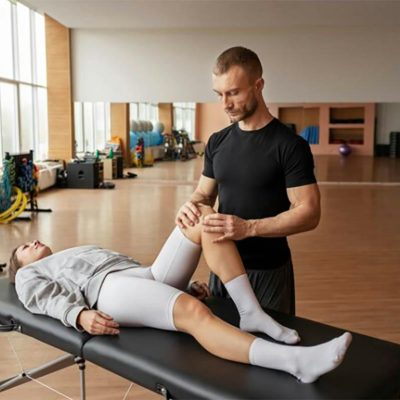Sports are more than just games—they are a powerful expression of human ability, resilience, and competition. But behind every sprint, jump, and tackle lies a critical discipline that ensures athletes remain healthy, recover from injuries, and sustain their careers: sports medicine. This specialized branch of healthcare bridges the gap between athletics and medicine, focusing on injury prevention, rehabilitation, performance enhancement, and overall well-being.
In this article, we will explore the foundations of sports medicine, the most common injuries athletes face, treatment strategies, rehabilitation techniques, and the future innovations transforming this dynamic field.
What Is Sports Medicine?
Sports medicine is a multidisciplinary field of healthcare that concentrates on the physical fitness, injury management, and performance optimization of athletes and physically active individuals. Unlike general medicine, which deals broadly with illness and health, sports medicine zeroes in on:
-
Injury prevention: helping athletes avoid harm through proper training techniques, nutrition, and conditioning.
-
Diagnosis and treatment: addressing musculoskeletal injuries such as sprains, fractures, and dislocations.
-
Rehabilitation: creating tailored recovery programs to restore mobility, strength, and performance.
-
Performance enhancement: advising on nutrition, biomechanics, and sports psychology to maximize athletic potential.
Sports medicine specialists include physicians, orthopedic surgeons, physical therapists, athletic trainers, nutritionists, and psychologists. Together, they create an integrated support system for athletes at all levels.
Common Sports-Related Injuries
No matter how skilled or conditioned an athlete is, injuries are an inherent risk of physical activity. Some of the most frequent injuries seen in sports medicine include:
1. Sprains and Strains
-
Sprains involve stretched or torn ligaments (commonly in the ankle or wrist).
-
Strains affect muscles or tendons, often seen in hamstrings, quadriceps, or lower back.
These injuries typically result from overstretching, sudden movements, or poor warm-up routines.

2. Knee Injuries
The knee is one of the most vulnerable joints in sports. Conditions such as ACL tears, meniscus injuries, and patellar tendinitis (jumper’s knee) are prevalent among basketball, soccer, and football players.
3. Fractures
Contact sports or high-impact activities often lead to broken bones, requiring immobilization, surgery, or extensive rehabilitation.
4. Concussions
Concussions, or mild traumatic brain injuries, are a growing concern in sports like American football, boxing, and rugby. Proper protocols are essential to ensure safe return-to-play decisions.
5. Overuse Injuries
Repetitive movements can cause conditions like tennis elbow, stress fractures, or shin splints. These injuries highlight the importance of rest, balanced training, and technique correction.
The Role of Rehabilitation
Once an injury occurs, rehabilitation becomes the cornerstone of recovery. Sports medicine emphasizes evidence-based practices to ensure athletes regain full function without risking re-injury. Key components include:
-
Physical therapy: targeted exercises to restore flexibility, strength, and mobility.
-
Manual therapy: techniques like massage, joint mobilization, and manipulation to improve recovery.
-
Hydrotherapy: using water exercises to reduce stress on joints during early recovery.
-
Neuromuscular training: retraining muscles and nerves to coordinate movement patterns effectively.
-
Gradual return-to-play protocols: ensuring athletes return to competition only when they are fully ready.
Rehabilitation is not just about physical healing—it also addresses the psychological challenges athletes face when sidelined from their sport.
Nutrition and Sports Medicine
Performance and recovery are deeply connected to nutrition. Sports medicine integrates dietetics to optimize outcomes. Key considerations include:
-
Macronutrients: Carbohydrates for energy, proteins for muscle repair, and fats for endurance.
-
Micronutrients: Vitamins and minerals like calcium, iron, and vitamin D to support bone health and energy metabolism.
-
Hydration: Adequate water and electrolyte balance are critical to prevent cramps, fatigue, and heat-related illness.
-
Supplements: In some cases, sports medicine experts recommend safe supplementation for performance enhancement.
Proper fueling before and after activity not only boosts performance but also accelerates recovery.
Sports Psychology: The Mental Side of Medicine
Injuries and high-performance pressure often take a toll on mental health. Sports medicine recognizes the importance of psychological support for athletes. Sports psychologists help with:
-
Coping with injury-related stress.
-
Building confidence after recovery.
-
Managing performance anxiety.
-
Developing focus and motivation strategies.
Mental resilience is often the difference between a successful comeback and a career setback.
Preventive Strategies in Sports Medicine
An ounce of prevention is worth a pound of cure. Sports medicine heavily emphasizes preventive strategies to reduce the risk of injury, such as:
-
Proper warm-up and cool-down routines.
-
Strength and conditioning programs tailored to specific sports.
-
Biomechanical analysis to correct posture, gait, and movement patterns.
-
Protective gear like helmets, braces, and pads.
-
Load management—balancing training intensity and rest.
Prevention not only prolongs athletic careers but also improves long-term quality of life.
Cutting-Edge Innovations in Sports Medicine
The field is rapidly evolving with groundbreaking technologies and research. Some notable innovations include:
-
Regenerative medicine: Stem cell therapy and platelet-rich plasma (PRP) injections to accelerate healing.
-
Wearable technology: Smart devices that track movement, fatigue, and performance in real time.
-
3D printing: Custom orthopedic implants and protective gear.
-
Telemedicine: Virtual consultations to expand access to sports medical expertise.
-
Genetic testing: Identifying predispositions to injuries and optimizing training.
These advancements promise to make recovery faster, safer, and more personalized.
The Broader Impact of Sports Medicine
While sports medicine is often associated with professional athletes, its benefits extend far beyond elite sports. Everyday individuals who exercise recreationally also face injuries and performance challenges. Schools, workplaces, and community programs increasingly integrate sports medicine practices to promote safe physical activity.
Moreover, research in sports medicine contributes to broader medical knowledge, influencing orthopedic surgery, neurology, rehabilitation science, and even geriatrics.

Conclusion
Sports medicine is more than just patching up injuries—it is about enabling human potential. From preventing sprains to treating concussions, from guiding nutrition to exploring regenerative therapies, sports medicine shapes the way athletes train, compete, and recover.
As technology advances and the understanding of human performance deepens, the field will only grow in importance. Whether you’re a professional athlete, a weekend warrior, or someone aiming to stay active and healthy, sports medicine offers invaluable insights into keeping the body strong and the spirit resilient.



